Search this site ...
Kuba Cloth
Kuba textiles have been designed and handcrafted by the Kuba ethnic group of the Democratic Republic of the Congo for hundreds of years; the skill of the craft being passed on from generation to generation and the cloth is still produced today.
Weaving is of paramount importance to the Kuba peoples, woven fabric forming the basis of the ceremonial dress for royalty and thereby expressing status of wealth, hierarchy and personal states of transition.
Traditionally woven to use as a wraparound skirt during ritual festivals and performances, the main material used in the construction of the cloth is a fiber extracted from the raffia palm. The skirt was secured with a sash and usually worn over a plain red or cream embroidered skirt and is thought to be a unisex garment.
The cloths are unique for their surface decoration, elaboration of design and general complexity of construction of the textile.
In superior fabrics they are decorated with applied ornamentation such as linear embroidery and attaching of cowrie shells and seeds. Appliquéd holes and patch-working different cloths and designs together are other techniques of embellishment as are creating areas of cut-pile surfaces and making tight bobbles out of raffia for the fringes.
Some of these cloths are up to 20 feet long and others are 2 foot square rectangles to be hung behind royal thrones, draped over altars and can be used as sleeping mats.
There is also a technique of making the edges wavy to enhance movement during celebration dances by stitching a reed around the edges of the cloth.
Throughout a man's life, he will collect and preserve inherited Kuba cloths to celebrate his position in society and represent his high status at his funeral.
History
After migrating south in the 16th Century and between the 17th and 20th Centuries, the Kuba kingdom, (also known as the Kingdom of the Bakuba or Bushongo), was one of the most extended and powerful societies in Africa, trading in ivory and rubber in the southeast area of what is now the Democratic Republic of the Congo.
The kingdom reached its apex during the mid 19th Century.
The region was bordered by the Sankuru, Lulua and Kasai Rivers with a rich culture of arts and artistry; making carved boxes and palm wine cups, helmet masks, figurines, beadwork and of course, textiles.
As far back as early 17th century, central governments in the region collected textiles as a form of tribute-tax to expand the royal treasury. The Wissmann expedition into the Kasai River region in 1884 first reported the presence of these outstanding cloths but it is noted that the Bakuba resisted exchanging their products in trade for imported cloth for many years.
The first real attempt to document the material culture of the peoples of the Kasai was made by Emil Torday in the early decades of the 20th Century and it was he and his associates at the British Museum who called the raffia cut-pile cloths "Kasai Velvet" as a point of reference.
This piece above is one of the oldest pieces in a collection anywhere and can be found at the Baltimore Museum in the USA. It is dated somewhere between 1736 and 1799 (carbon testing).
The elaborateness of Kuba cloth can be used to trace the rise and decline of the kingdom but even today, nineteen different ethnic groups still exist and are presided over by the reigning monarch (nyim), Kot-a-Mbweeky III who has been on the throne since 1968.
SHOOWA CLOTH
The Shoowa people introduced cut-pile embroidery to the Kuba kingdom following their incorporation into the centralized state in the mid-17th century. This technique is highly specialized and time consuming. Designs are stitched onto the cloth and then raffia fibre is drawn through with needle and snipped with a knife to make a dense pile allowing a plush, velvet-like effect to be created.
Shoowa cloths are predominantly rectangular in shape and feature strong geometry and strongly contrasting colors, normally cream, yellow ochre or tan... and black.
Shoowa designs are completely abstract, based on a complex series of symmetries.
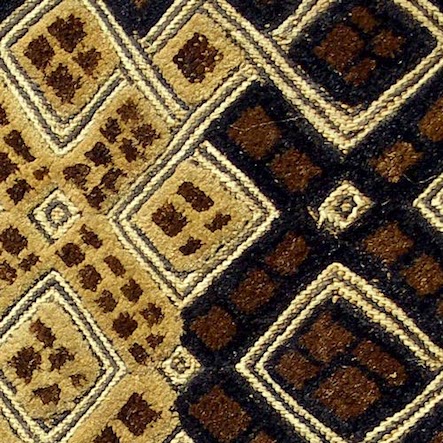 Detail Shoowa, Hamill Gall
Detail Shoowa, Hamill GallThis superb shoowa cloth features an unusual asymmetrical, geometric design. It also has stitching, cut-pile raffia and natural dyes. The cloth below the ochre and black textile, features brighter colors; an orange and a purply-plum.
Production
The raffia fibre used in kuba cloth production is woven only by men on a 45 degree angled loom. It requires great skill and physical stamina, always working above your head.
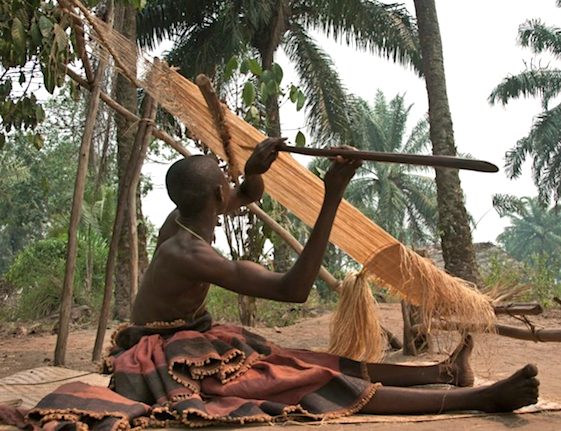 Weaving kuba cloth from raffia on 45 degree loom
Weaving kuba cloth from raffia on 45 degree loomThere are 2 major types of Kuba cloth in terms of production, all using raffia palm.
Firstly, the cut-pile tapestry cloths we have seen already (shoowa) and secondly the appliquéd cloths which are strip woven, the appliquéd designs are stitched on and then the cloth is sewn together to make the final item (long wraparound skirt). The men of the tribes are responsible for cultivating, cutting, gathering and dyeing the fabric using indigo, mud and especially substances from the camwood tree which are referred to as twool and are red in color.
The raffia fibre is rubbed by hand to soften it for weaving and then woven into cloth on inclined, single-heddle looms.
The fabric is still rough when it comes off the loom and is then pounded in a mortar, easing it further and making it ready for surface finishing by the womenfolk.
Women are in charge of the embellishment of the woven pieces, a time consuming process of making the cut pile sections, applying surface design details, appliquéing contrasting colors on top of the base cloth to create abstracted, geometric designs and then constructing garments out of the cloth... like hats, wraps, belts, ceremonial skirts and cloths for trade.
Much can be determined from the design and color of a Kuba cloth including social status, age, marital status and character of the wearer.
Design, Color and Decoration
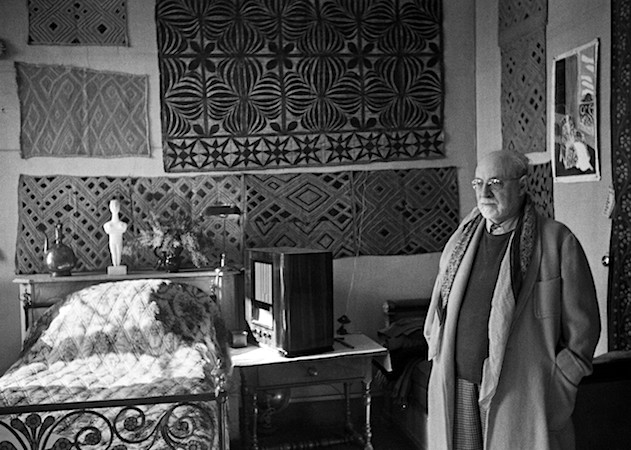 Henri Matisse studio with kuba cloths adorning the walls
Henri Matisse studio with kuba cloths adorning the wallsHenri Matisse the French impressionist acquired many styles of kuba cloth to adorn the walls of his studio as seen in the historical photograph above. Sitting alongside his cutouts, their graphic, geometric shapes and abstract patterning intrigued him and provided source of inspiration.
It is said that he would sit and stare at them "waiting for something to come to me out of there instinctive geometry". His 1947 paper cut-out Les Velours reportedly was influenced by kuba appliqué.
DESIGN
There are 4 components that make up the uniqueness and specialness of each individual kuba cloth:
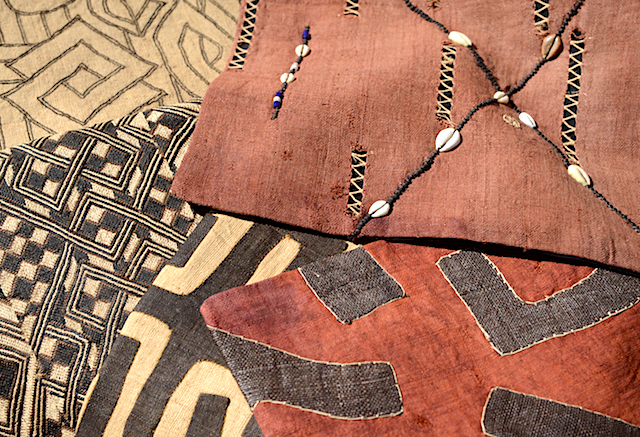 Various styles of Kuba cloth, Ignoti, https://www.ignoti.nl/products/
Various styles of Kuba cloth, Ignoti, https://www.ignoti.nl/products/- What era it was made in
- The purpose it was designed for
- The availability of raw materials
- The level of human skill and expertise
These are all contributing factors in determining what a piece finally ends up looking like. A particularly beautiful and accomplished kuba cloth can be directly linked to hierarchy and reinforcing political authority. The dramatic impact of its design is key to visually cementing that dominance.
There are, in fact, over 200 types of traditional patterns, (permutations of hexagons, rectangles, squares, chess, triangles and other compositions), that are handed down from generation to generation. In production a basic design is rarely worked out in advance and the pattern is created from memory and repetition. of motif or pattern, mostly interlocking geometrics. It does however account for the more abstract design and sometimes, the fascinating asymmetry, that exists in some cloths.
The piece opposite shows an asymmetrical red and pale gold wraparound cloth showing high contrast checker design, cowrie shells worked with embroidery in a criss-cross pattern, strips of Kuba of varying widths sewn together in patchwork and an end feature of cut-pile embroidery in natural-dye colors of tan and gold and dark umber.
COLOUR
There are two aspects to coloring kuba cloths, namely those that are produced using a palette of natural, vegetal dyes and those that have been made using synthetic dyes. The latter are harsher, bolder and brighter in character.
Traditionally dyes are created by natural materials, red from sandalwood or camwood, yellow form the brimstone tree, black from vegetable sources and mud... and white from kaolin, a mineral.
Bright colors (like the blue in the cloth here) will be derived from synthetic sources.
Twool is a red vegetal dye from the camwood tree and can be mixed with palm oil to create a gel-like substance that is applied to ornament the face and body for rituals.
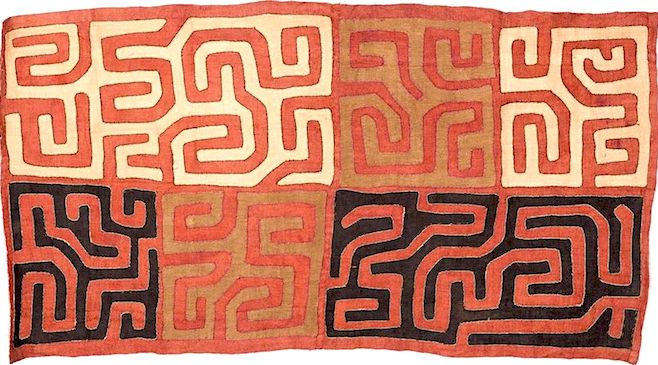 Kuba applique cloth, red, black and ochre dyes
Kuba applique cloth, red, black and ochre dyesThe red color is significant in Kuba culture.. perceived as beautiful and powerful, it is used for funerals and rituals of death as well as significant events.
A more sombre palette of natural raffia (cream), raw and dark umber and charcoal also exists alongside the more commonplace ochre, tan, red and deep browns.
Seen below are a number of African textiles being used for decorative cushions; Bakuba, Shoowa, Pygmy Mbuti, Bambara tie-dye and mud cloth.. all using natural vegetal dyes in earthy tones.
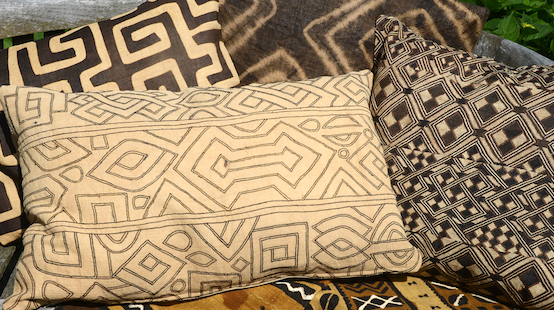
DECORATION-Surface Embellishment, Borders and Sashes
Sometimes a cloth is left in its natural state and completely covered in decoration. Other times it is dyed and parts of it are left uncovered to appreciate the dyed color and effects.
Decoration of the cloth includes raffia-thread stitching, cut-pile velour, sewing on of cowrie shells and seeds, ornamental appliqueing of cut-out shapes as well as cutting out shapes, beading, raffia fringing and raffia bobbles. All of these increase the significance and attraction of the piece.
Embellishment of dance regalia includes adding a hat, sash belts in skin and/or fabric, necklaces, arm and ankle bracelets of beads or animal teeth.
These three Kuba bands are dated early 20th Century and were taken to Belgium in 1934. Made as borders for skirts worn by members of the royal family and other high office holders, they feature cut-pile techniques from raffia and show use of both natural and synthetic dyes.
Masquerade and Celebratory Dance
The image above shows the spectacle and drama created by dancers in their full regalia with all the accessories to the metres and metres of overskirt wrapped around the waist. The dancers hold carved staffs, horns and tail-hair whisks.
Contemporary Kuba
From an exhibition in New York, the photographer John Edmunds uses kuba cloth and other African objects to explore themes of modernity and identity in the African diaspora, offering new aesthetic and conceptual possibilities.
Kuba textiles continue to provide exciting starting points for contemporary art and culture such as this stunningly dramatic costume designed for the Metropolitan Opera by Jurgen Rose.
Fittingly designed for the role of King Mark in a production of Wagner's "Tristan und Isolde", the Celtic like symbols found in kuba cloths recall the medieval era on which the opera is based.
Modern Kuba in Decor and Fashion,
For textile enthusiasts, Kuba cloths make wonderful wall hangings and soft furnishings. Each cloth is unique and provides an element of substance and interest to an environment.
Textile designers love kuba cloth! They can be dramatic or subtle and that's their beauty.
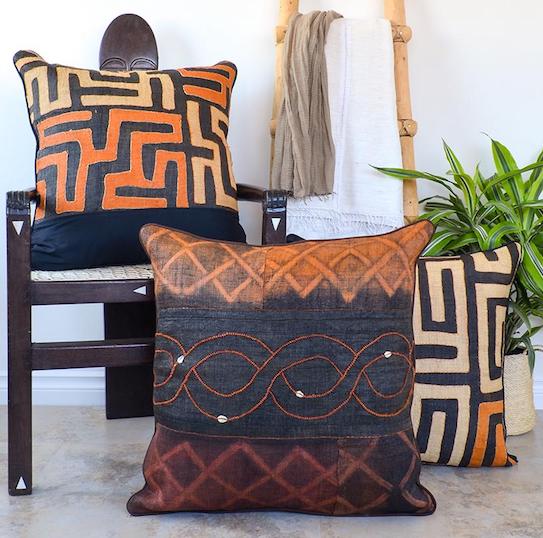
An unusual and creative use of kuba cloth in lighting, the textured qualities of the fabric will add to its appeal when lit up.
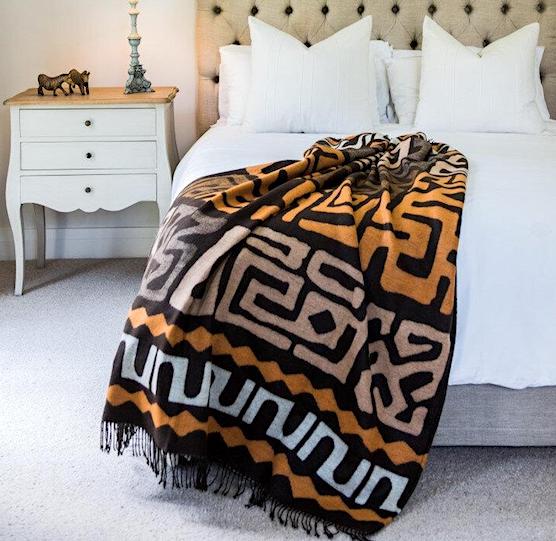
The blanket throw is a printed design using kuba cloth as its source, graphic in its interpretation but authentic in its coloring.
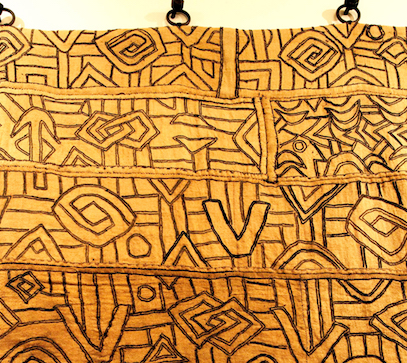
Here an extraordinarly exquisite piece of appliquéd kuba cloth acts like an abstract wall piece, creating a dramatic effect in a home. A simple, contemporary way of hanging the textile completes the modern look.
Below are featured graphic interpretations of kuba for print but, this time, more fashionable colours are used to follow trends and create excitement.
The combination of shapes and color make for dramatic garments.
Original kuba fabric of any type is particularly suitable for bags and handbags. Combined with leather they are sturdy as well as beautiful, the tapestry texture of shoowa being particularly appropriate.
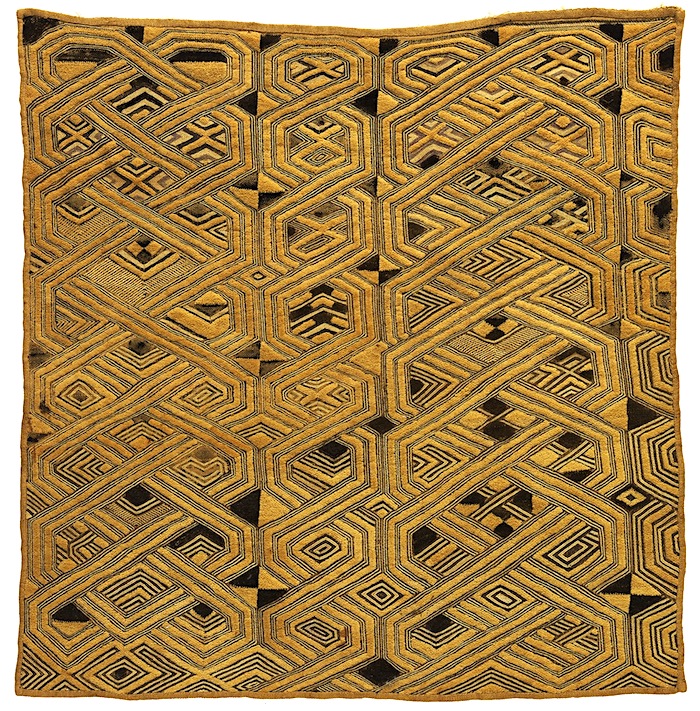
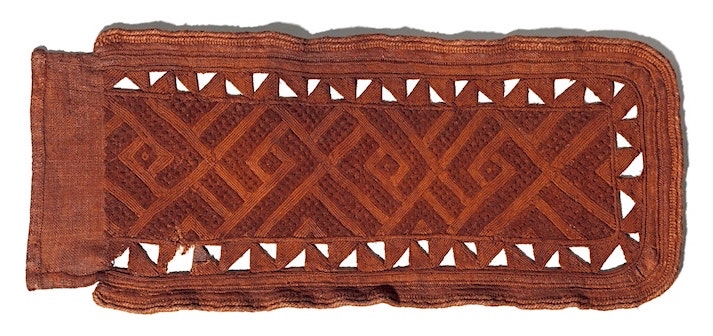
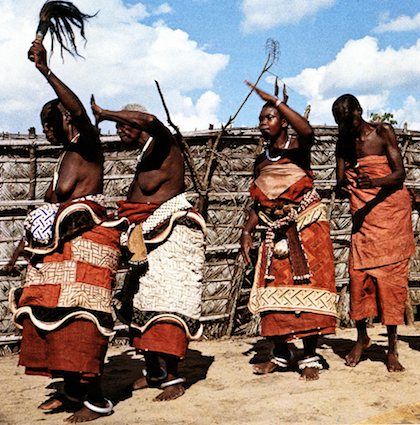
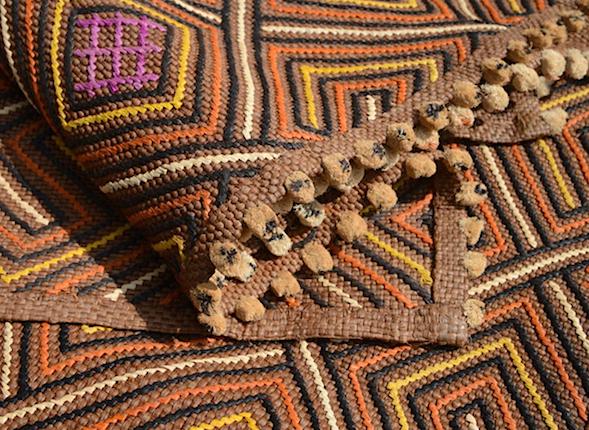
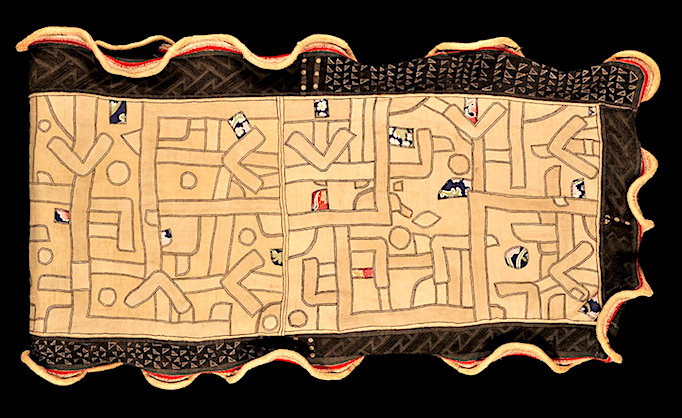
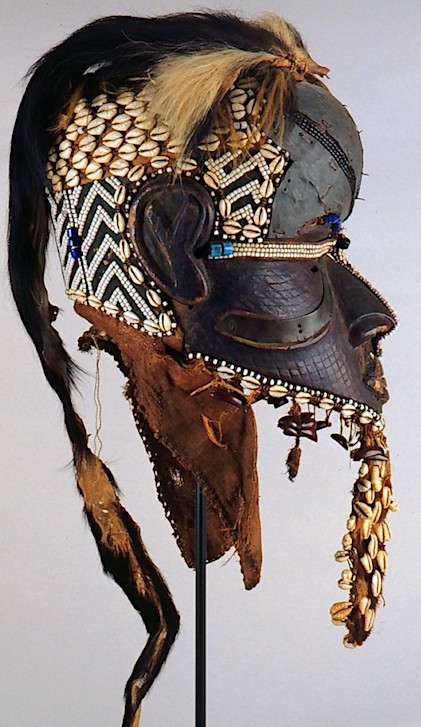
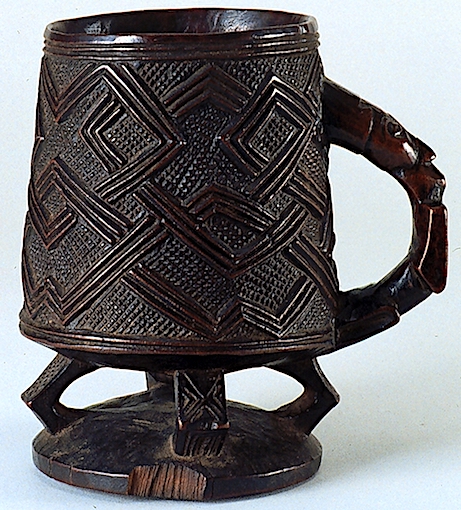
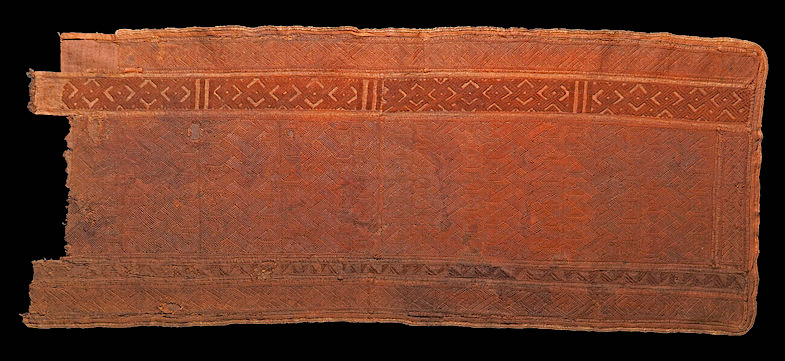
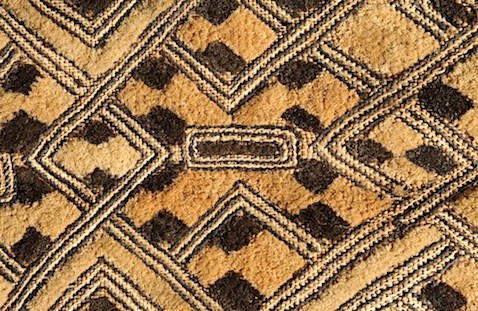
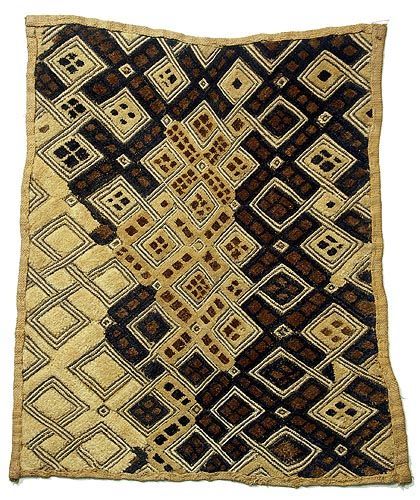
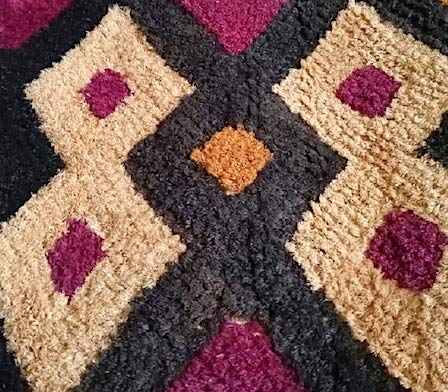
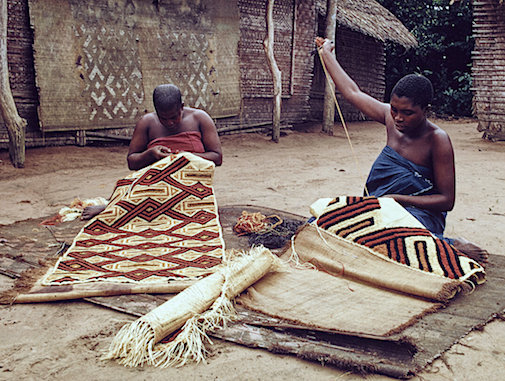
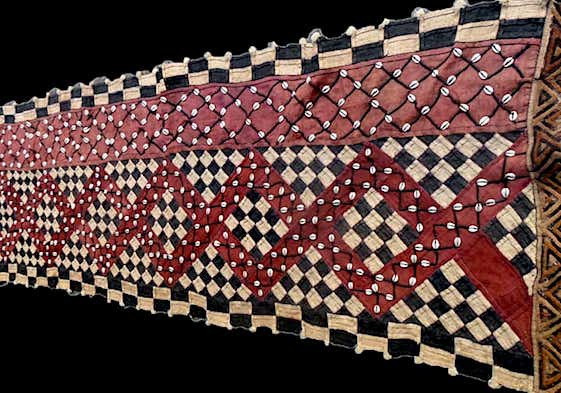
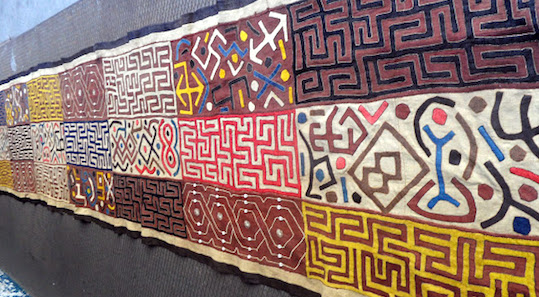
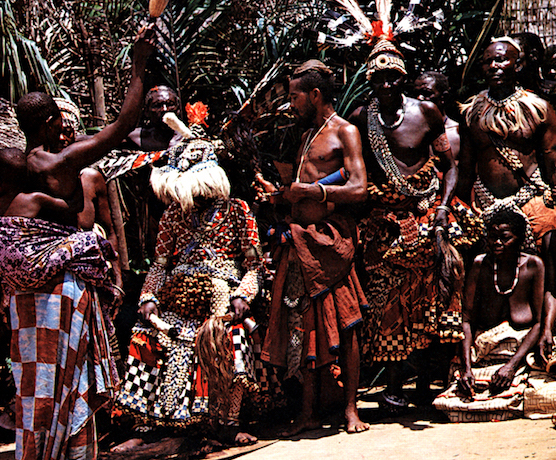
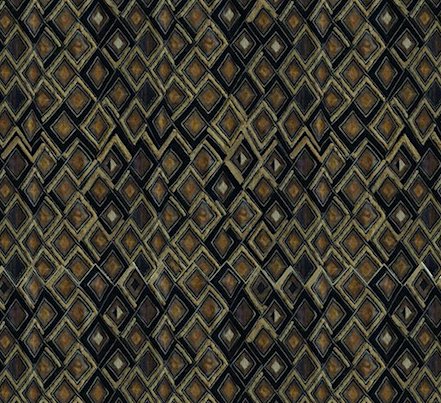
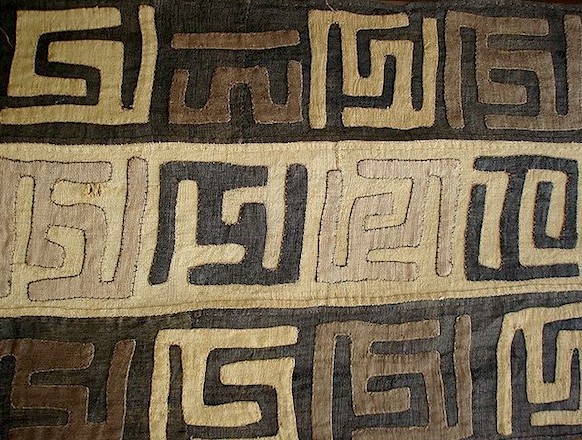
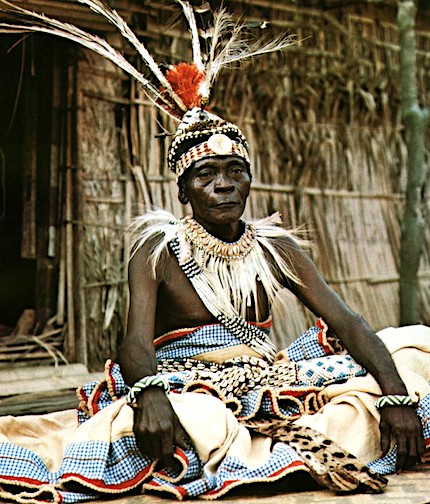
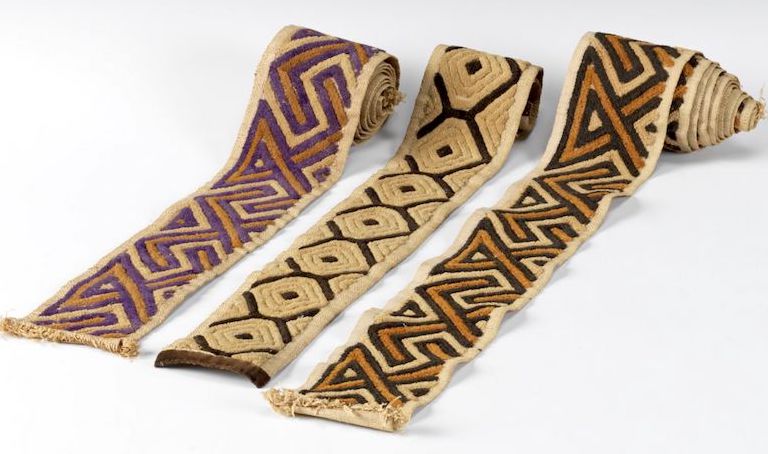
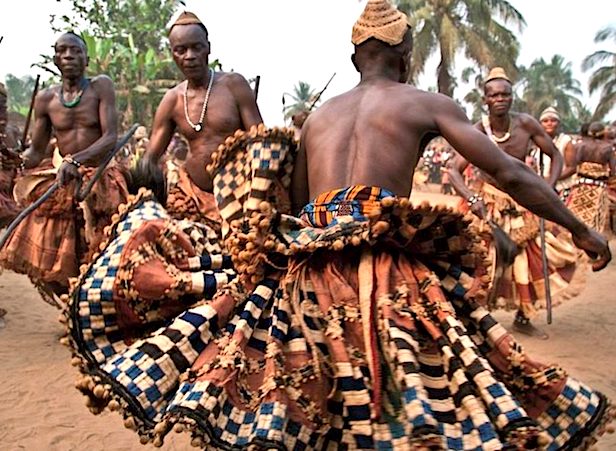
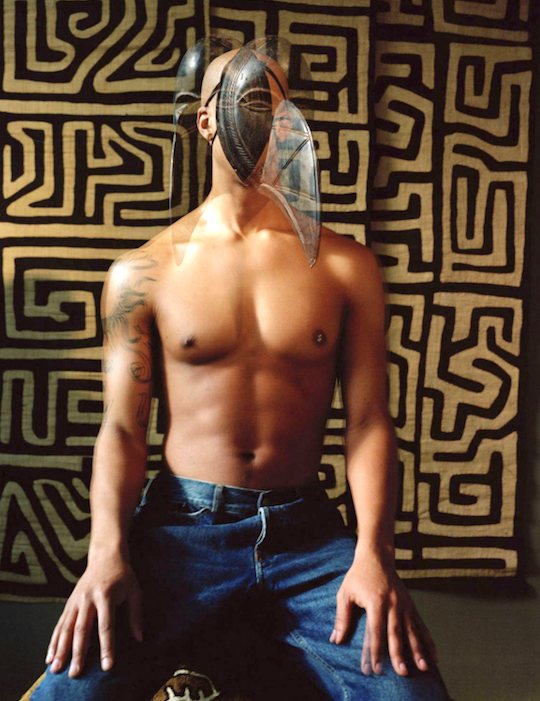
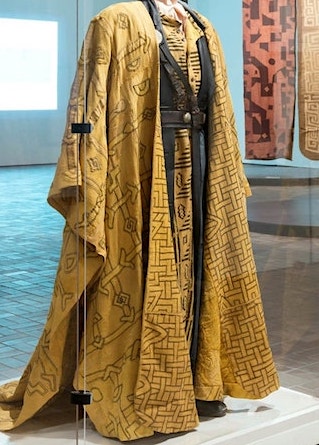
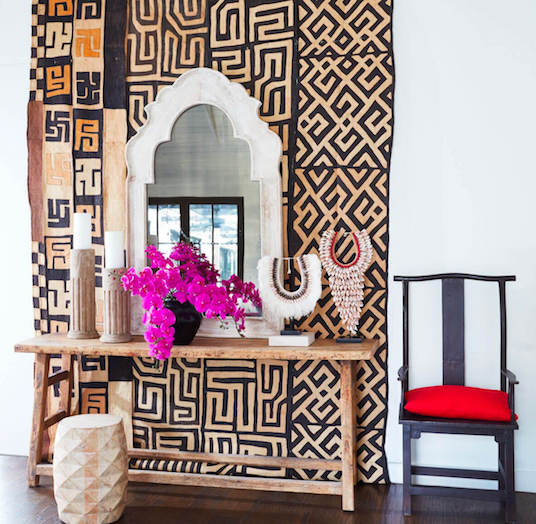
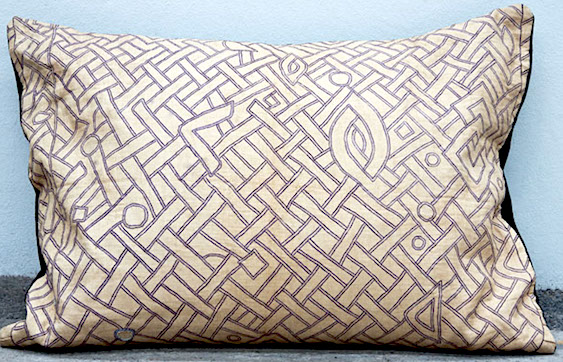
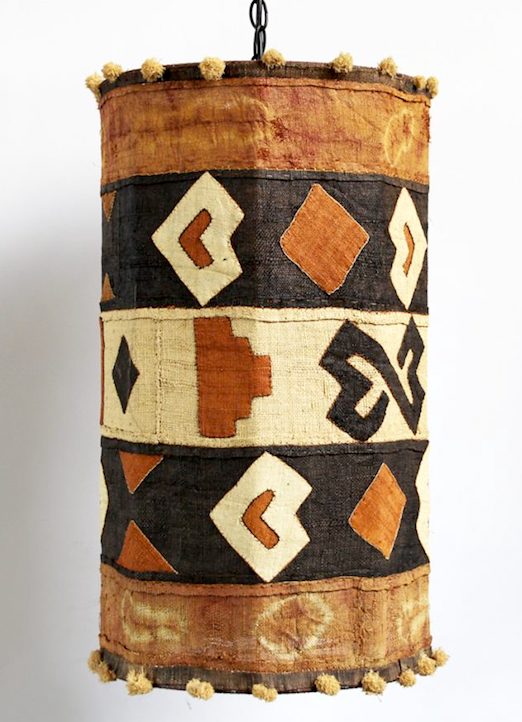
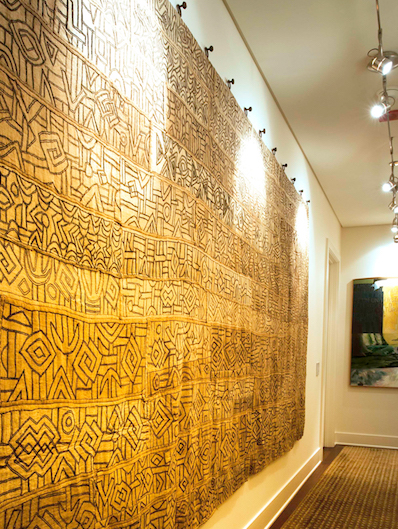
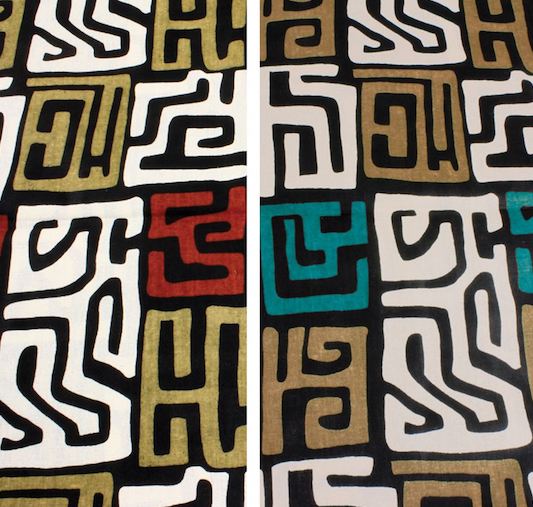
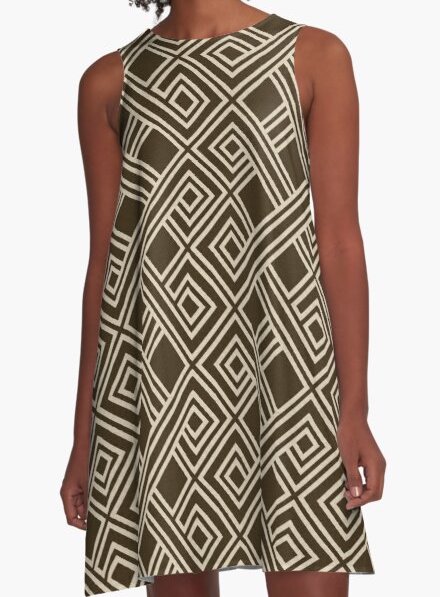
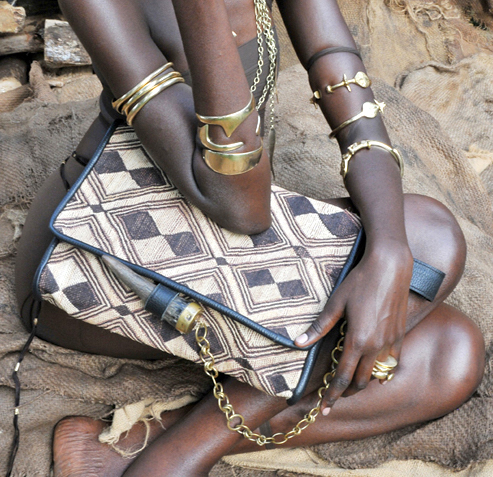
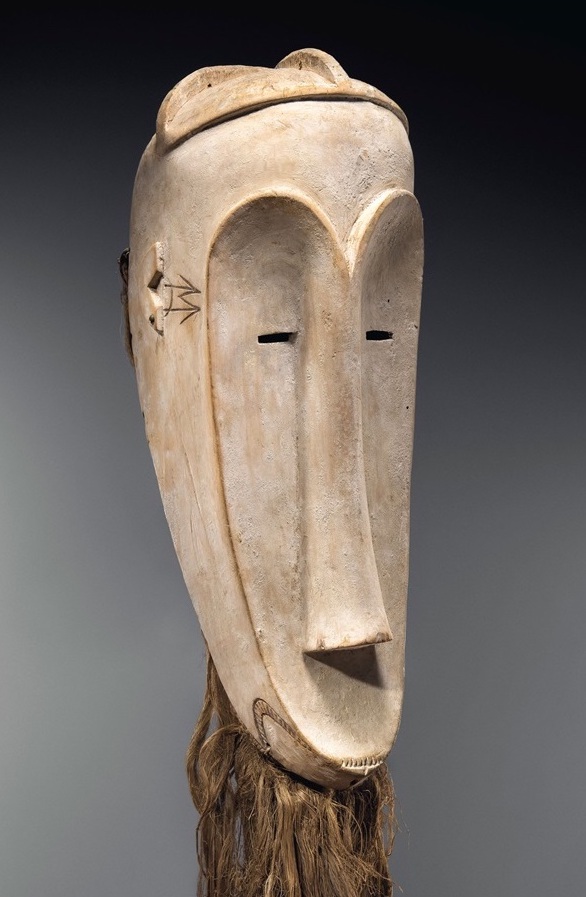
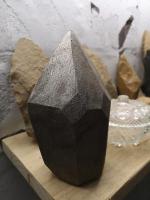

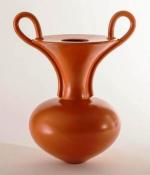
New! Comments
Have your say about what you just read! Leave me a comment in the box below.